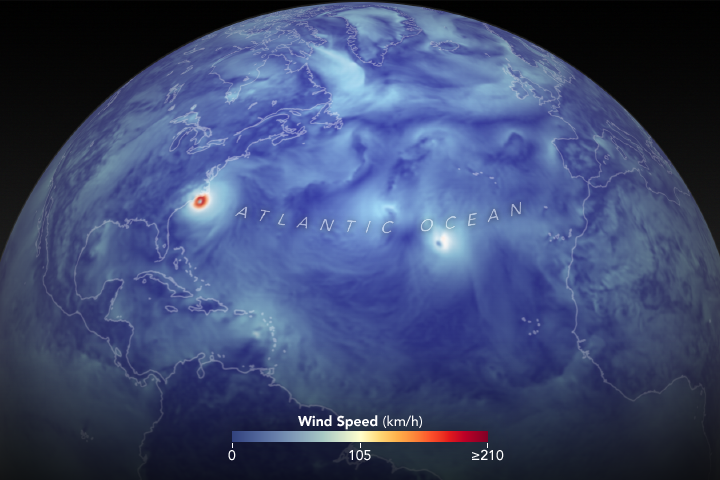GMAO Researchers Featured in Articles on Two Major 2018 Hurricanes
01.16.2019
During the 2018 Atlantic hurricane season, the Southeastern US experienced the wrath of two hurricanes, designated Florence and Michael. Each of these Category 4 storms was unique. By using the Goddard Earth Observing System model (GEOS), an experimental weather model that scientists at NASA use to analyze global weather phenomena, GMAO atmospheric scientists were able to track and study both of these storms. The GEOS model ingests wind data from more than 30 sources, including ships, buoys, radiosondes, dropsondes, aircraft, and satellites to fine tune the progression of its computer forecasting runs.
"Live Science" and NASA's "Earth Observatory" highlighted the work of GMAO atmospheric scientists in modeling  the evolution and tracking of Florence and Michael.
GMAO researchers Marangelly Fuentes and Gary Partyka were interviewed because of their work using GEOS and were subsequently quoted in a total of five separate news articles about these two major storms.
the evolution and tracking of Florence and Michael.
GMAO researchers Marangelly Fuentes and Gary Partyka were interviewed because of their work using GEOS and were subsequently quoted in a total of five separate news articles about these two major storms.
The first of the Earth Observatory articles was entitled
"The Complex Evolution of Florence’s Winds". It included an animation of that storm's wind field based on data from the current GEOS model.
A second article on Florence was Earth Observatory's September 12 article "Florence Crossing Warm Waters on the Way to the Carolinas".
The three articles on Hurricane Michael described above can be found at
https://earthobservatory.nasa.gov/images/92864/hurricane-michael-heads-for-florida
https://www.livescience.com/63793-hurricane-michael-category-4-florida.html
and
https://www.livescience.com/63795-why-hurricane-michael-intensified.html

